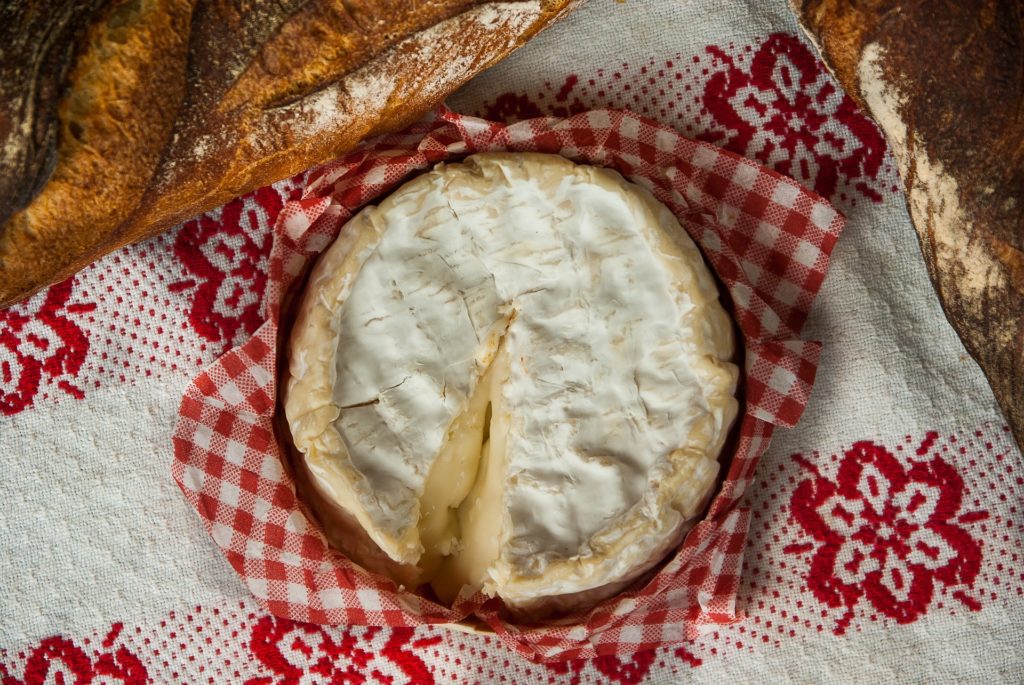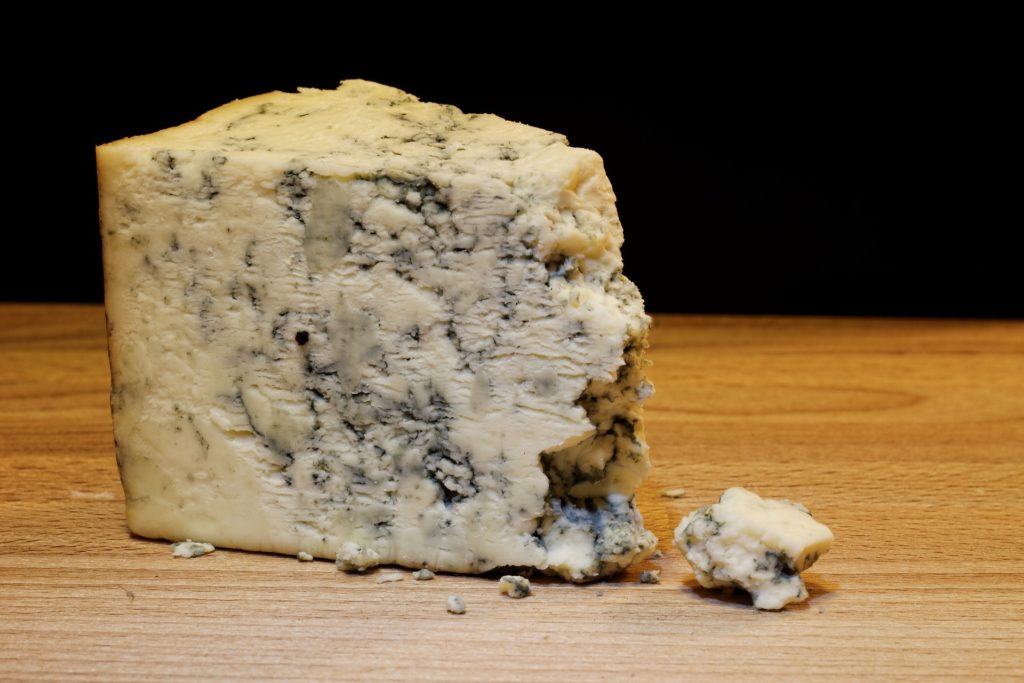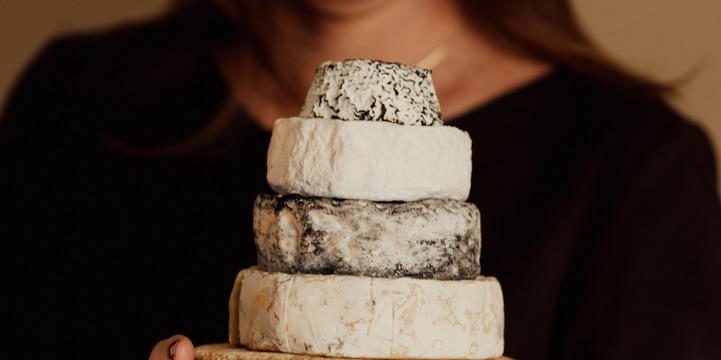By Emanueli Backes
Cheese – a millenary dairy product which plays an essential role in the global economy – is traditionally consumed in many countries and therefore considered one of the most important agriculture products. In 2019, 26 million tonnes of cheese were produced worldwide – a 2.6% increase on the year before – with a turnover of $114.1 billion1. According to the Food and Agriculture Organization (FAO), Europe and North America are the main contributors to worldwide cheese consumption, however, because of its broad texture and flavor variety its consumption reaches many other cultures. In fact, there has been a significant increase in the number of so-called “cheese-lovers” in regions where the product is not traditionally consumed2.
Among the variety of available cheeses, moldy cheeses have unique characteristics, technologically and sensory-wise, that make them special. The history of moldy cheese goes back centuries, and the science behind it is pretty intriguing and charming. Thus, to better clarify this exciting topic and some of its peculiarities, we were pleased to have Dr. Maike Montanhini for a special interview for Science Meets Food. She is a Brazilian dairy technology consultant, researcher, and specialist cheesemaker, with more than 25 years of expertise in the field.
Classes of mold-ripened cheese
If you thought moldy cheese was just a simple cheese group, you might be surprised to discover the immense complexity that goes into making these cheeses. In this interview, Dr. Montanhini highlighted differences between fungal cheeses which are classified into five different categories:
- Cheeses with flowery rind: within this group, there are different types of cheese. The most common are cheeses covered with white fungus (Penicillium camemberti), where Brie and Camembert cheese stand out.
- Soft cheese and washed rind (smear-ripened cheese, red-smear cheese, or washed rind): in this type of cheese, the rind is treated during maturation to favor the development of some microorganisms, mainly Brevidobacterium linens, and Geotrichum candidum; this is a common cheese category in Europe, with Tellegio, Reblochon, and Limburger as examples.
- Blue cheeses: they are cheeses recognized for their appearance and flavor conferred by the development of Penicillium roqueforti within the cheese mass; the most famous examples in this category are Roquefort, Stilton, and Gorgonzola.
- Hybrid cheeses: they are cheeses where the simultaneous development of camemberti fungi on the surface of cheeses and P. roqueforti inside the dough. This fusion of technologies gave rise to Cambozola, Bleu de Bresse, Bavaria Blu, and others.
- Mixed rind cheeses: in this type of cheese, the development of fungi naturally present in cheese, derived from milk and mainly from the environment, is stimulated. In this case, it is not just a fungus species that develop, forming a complex and variable skin depending on the type of cheese. Saint-Nectaire and Tomme de Savoie cheeses are examples of cheeses in this category. Mucor is the predominant genus of fungi present in the rind, which cheeses mushrooms’ flavor and aroma.

Photo by Jackma34 from Pixabay.
The role of fungi
If you are like me, a food science enthusiast, you will probably be pleased to learn the functon of fungi in cheese and what happens in the structure to achieve the final desired product. Helpfully, Dr. Montanhini passed across this point too.
M: Fungi have great proteolytic and lipolytic activity, in addition to other enzymes that act on milk components. As a result, they break down proteins into peptides and amino acids; and lipids into short-chain fatty acids to promote changes in texture, flavor, and aroma.
Cheeses with surface fungi have a centripetal maturation (from the skin to the center), forming a texture gradient: more creamy just below the skin and with a firmer heart in the center. As the cheese matures, this heart decreases until it disappears, while the flavor and aroma intensify. Therefore, these cheeses’ sensory characteristics depend on the degree of ripeness. Young cheeses have a milder, slightly acidic taste, subtle smell, and firm texture. Well-aged cheeses are creamy, with a characteristic flavor and slightly ammoniacal aroma.
On the other hand, blue cheeses have a more homogeneous maturation, with fungi developing inside the dough, forming bluish veins. These cheeses usually have a higher salt content, which plays a selective role in maturing these cheeses, stimulating the growth of P. roqueforti, and inhibiting undesirable contamination. As a result, these cheeses are recognized for their salty taste, spicy flavor, and pronounced aroma, in addition to their white marbled appearance with bluish-green.
In soft cheeses with a washed rind, a complex microbiota develops on the surface, predominantly gram-positive bacteria and yeasts, which leave the cheese with an orange color, characteristic flavor, and intense aroma. The process of washing the rind prevents the cheese from drying out, and the rind from becoming hard; some cheeses in this category have a sticky rind, such as Epoisses.

Photo by Tookapic from Pixabay.
Controlling the fungi in mold-ripened cheese
Globally, the most recognized categories of moldy cheeses are those with flowery rind and blue cheeses. Dr. Montanhini reinforces that the type of fungus present and applied technology for manufacturing and maturing are crucial for distinguishing them.
M: The differences between these types of cheese are based on the type of fungus present and some stages of the technological processes of manufacturing and maturing them. These fungi can be added in the form of starter culture or be part of the indigenous microbiota present in the milk or environment. Cheeses with white or blue fungus are usually obtained from yeasts’ inoculation in milk or dough before the beginning of maturation.
In blue cheeses, the fungus develops inside the dough. Thus, it is necessary to guarantee the presence of eyes and holes that allow oxygen to enter, contributing to P. roqueforti development. The technological conditions to manufacture and mature should favor the development of the desired fungus and inhibit the growth of those not characteristic of the type of cheese produced. The main control variables are pH, oxide-reduction potential (Eh), salt, and the cheeses’ moisture content. During maturation, the temperature and relative humidity of the chambers must be controlled.
When questioned about the necessary precautions to avoid cheese contamination by other fungi or bacteria, Dr. Montanhini stated some critical remarks.
M: An essential condition for controlling these cheeses’ production is preventing the environmental contamination of the cheese. Spores of unwanted fungi present in the air, water, or equipment can contaminate the cheeses and cause unwanted changes in cheeses where the presence of such fungi is not desired. The primary sources of contamination are brine (which must be treated periodically) and air in the production and maturation environment. Periodic cleaning of the factory’s ventilation systems and spraying antifungal products is recommended to minimize environmental contamination. However, this type of treatment is not suitable for cheeses made with spontaneous natural fungi, as the inoculum comes from the environment itself. It is recommended that sporadic analyses be performed on this type of cheese to ensure no toxigenic fungus is established.
Cheeses’ intrinsic (pH, moisture, Eh, and salt content) and extrinsic (humidity and temperature of the ripening chambers) conditions must be carefully monitored. They are fundamental points to stimulate the growth of the desired fungi that inhibit contaminating fungi through competition.
After all this information, I bet your serving of cheese will never be the same! We are very thankful for having Dr. Montanhini explaining and demystifying a bit more about the science behind moldy cheeses.
References
[1] Global Trade. Global Cheese Market Hit Record Highs But Is to Lose Momentum Against the Pandemic. 2020. <https://www.globaltrademag.com/global-cheese-market-hit-record-highs-but-is-to-lose-momentum-against-the-pandemic/>
[2] OECD-FAO Agricultural Outlook 2020-2029. 2020. <https://www.cicarne.com.br/wp-content/uploads/2020/07/Outlook-OCDE-FAO-2020-29.pdf>

Emanueli Backes | Linkedin
SMF Blog Writer
Emanueli is a Brazilian enthusiastic for food science and technologies. Backes graduated with a degree in Food Engineering and Masters in Quality and Food Safety. She is now pursuing her PhD in Food Science. Backes research focus is on organic synthesis of new antioxidant compounds through enzymatic reactions.
Emanueli loves education and science popularization; she believes everything can be demystified, uncomplicated, and taught.






NICE POST!
THANK YOU FOR SHARING….
Nice article. Thanks for sharing. Keep inspiring us. 🙂
NICE POST!
THANK YOU FOR SHARING…